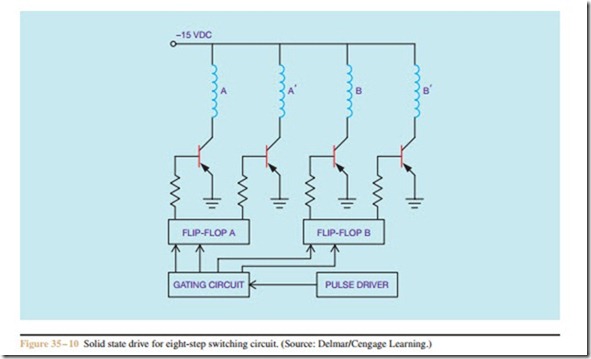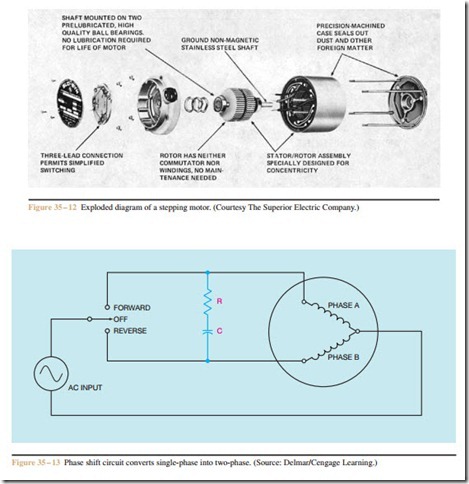Motor Characteristics
When stepping motors are used as two-phase synchronous motors, they have the ability to start, stop, or reverse direction of rotation almost instantly. The motor will start within about 11⁄2 cycles of the applied voltage and stop within 5 to 25 milliseconds. The motor can maintain a stalled condition without harm to it. Because the rotor is a permanent magnet, no induced current is in the rotor, and no high in-rush of current occurs when the motor is started. The starting and running currents are the same. This simplifies the power requirements of the circuit used to supply the motor. Due to the permanent magnetic structure of the rotor, the motor does provide holding torque when turned off. If more holding torque is needed, DC
voltage can be applied to one or both windings when the motor is turned off. An example circuit of this type is shown in Figure 35 – 14. If DC voltage is applied to one winding, the holding torque will be approximately 20% greater than the rated torque of the motor. If DC voltage is applied to both windings, the holding torque will be about 11⁄2 times greater than the rated torque.
Review Questions
1. Explain the difference in operation between a stepping motor and a common DC motor.
2. What is the principle of operation of a stepping motor?
3. What does the term bifilar mean?
4. Why do stepping motors have teeth machined in the stator poles and rotor?
5. When a stepping motor is connected to AC power, how many phases must be applied to the motor?
6. How many degrees out of phase are the voltages of a two-phase system?
7. What is the synchronous speed of an eight-pole stepping motor when connected to a two-phase 60 hertz AC line?
8. How can the holding torque of a stepping motor be increased?



